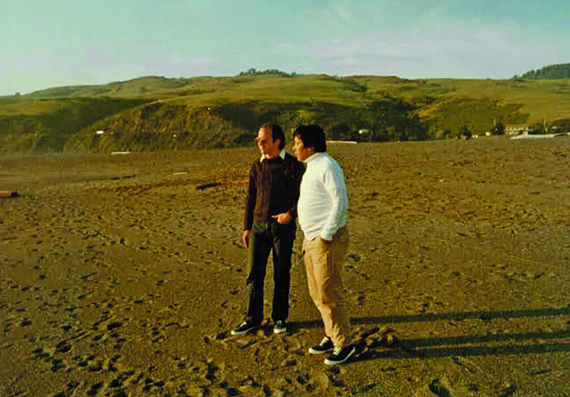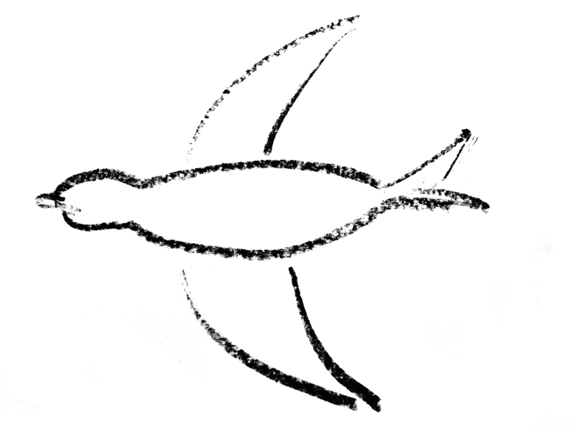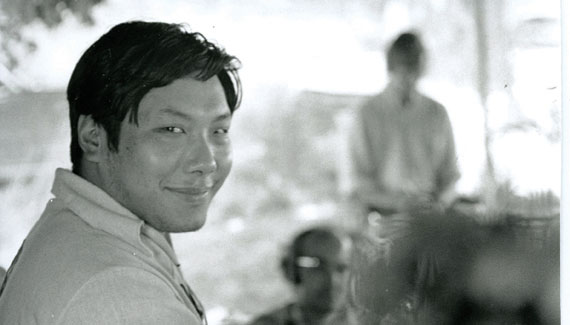In the fall of 1970 Bob Lester, then Chairman of the Religious Studies Department at the University of Colorado (CU), invited the highly ranked Tibetan Buddhist lama Chögyam Trungpa Rinpoche to teach a course on Buddhism to undergraduates. Rinpoche had arrived in the United States that spring from Scotland, establishing Tail of the Tiger (now Karmê Chöling) in Barnet, Vermont, where he gave summer seminars on the teachings of Milarepa, the Tibetan Buddhist saint, and other subjects. In August some CU professors had invited Rinpoche, then about 31 years old, to come to Boulder, and I and another student, Marvin Casper, both in our mid-twenties, had asked him if we could accompany him. So in October 1970 the three of us moved to Colorado, initially living together in a stone cabin with a potbellied stove and outhouse at 10,000 feet in Gold Hill but later moving to a modern duplex in Four Mile Canyon just outside town. Rinpoche’s wife, Diana, joined us after a few months, and the two of them stayed together in the first floor apartment, while Marvin and I inhabited the upstairs.
Rinpoche was introducing us to the most profound Buddhist description of reality as it arises in the only place and time it ever arises: here and now.
The CU course was to run in the winter semester of 1971. Rinpoche appointed Marvin and me as his teaching assistants, which meant helping him select readings, construct the syllabus, run the class, and conduct discussion groups. He, of course, determined the content and delivered the lectures.
At Tail of the Tiger, Rinpoche had given Marvin and me pointing-out instruction [the showing of the nature of mind by a teacher] and forged a bond with us stronger than any I had known in my relatively short lifetime. He had recently asked us to start teaching the students who were coming to him from the coasts and elsewhere, hippies mostly, without much money, adventurous and inspired by the dharma in general and by Rinpoche in particular. We knew very little doctrine, but Rinpoche had introduced us to the heart of the teachings. He felt it important for Westerners to connect to the essence of Buddhism first, so that they would not be dazzled and seduced by the many exotic forms that implied spectacular results, a problem he considered pandemic in America at the time.
The university had a population of about 25,000, including staff and students—this in a town whose total population was about 100,000. The town had a prominent population of Seventh-day Adventists (thus no alcohol was sold within city limits), there were no malls, and hippies were arriving from the coasts to live in the town and in the communes that constellated around it.
CU in those days had the reputation of being a second-tier school with a few standout departments, such as engineering. It was known to be popular with undergraduates who wanted proximity to Colorado’s ski areas as well as the overall opportunity to play and party. So our expectations for the class were not high, and we were not disappointed. My memory is that 40 or so students sat slumped in their chairs (the kinds with an enlarged arm for notepads), giving the impression of sleepiness and apathy. (In fact, a few of them later became devoted students of Rinpoche. You just never know.)
The room was large, stark, bare, and brightly lit by both the overhead fluorescents and the Colorado sunlight streaming in through outsize windows. Rinpoche wore a sport coat and tie; portly with tousled hair, he stood before the class, blackboard behind him, the Flatirons visible through the windows, rising 1,800 feet into the clear blue sky. Marvin and I sat in the front row, to the side.
Rinpoche presented basic Buddhist doctrine, but with an emphasis on the teaching about “spiritual materialism,” which he felt was particularly relevant to his audiences at that time. America was in the throes of the counterculture revolution, protests against the Vietnam War, and the invasion of Eastern religions from India, Tibet, Southeast Asia, and Japan. Think Satguru, Maharishi and the Beatles, Yogi Bhajan, Hare Krishnas on street corners and in airports, Zen Beats, macrobiotic diets, and of course yoga and meditation and kundalini energy and so much more. We were all too ready to ape the cultures of these imports, hoping that, by adopting their to-us-exotic forms we would enjoy some benefit or release from unhappiness. Rinpoche spent a lot of his time debunking that notion: critical of our naiveté, he once said to an audience, almost apologetically, “If I told you to stand on your heads 24 hours a day, you would do it.”

But the lecture that most stands out in my memory—because it was so revelatory for me, personally, and so brilliant—was the one Rinpoche gave on the trikaya, a Sanskrit term that refers to the three (tri) bodies (kaya) of a buddha: the dharmakaya, sambhogakaya, and nirmanakaya, which are to be understood at various levels. This was no lecture on spiritual materialism.
Most basically, the term nirmanakaya refers to the actual physical and mental manifestation of Shakyamuni Buddha as well as other enlightened individuals. Nirmana is usually translated as “manifestation” or “apparition” or “incarnation.” It is the idea that a person has taken rebirth many times—has died and been reborn over and over again—and that this current birth is the “nirmana,” or current manifestation/incarnation. The Tibetan translation of nirmanakaya is tulku, a term applied to reincarnate lamas, so the Dalai Lama is the 14th tulku (or nirmanakaya) in his line, and Chögyam Trungpa Rinpoche was the 11th Trungpa tulku.
In one sense we are all nirmanakayas (tulkus), because we all have been reborn many times. The term, however, is usually reserved for enlightened teachers who take rebirth deliberately, out of compassion and because they have taken a vow to work for the benefit of confused, sentient beings until they have all attained enlightenment. The rest of us unenlightened individuals take rebirth not deliberately but out of the force of our karma: habit and desire drive us forward in life and in death to continual and uncontrolled rebirth in various realms of suffering. We are fortunate to be human beings in this life—the human realm is the only one in which a being may traverse the path to enlightenment and freedom—but we may not be so fortunate in future lives. According to the Buddhist teachings, sooner or later we will be reborn in all the realms: god realms, animal, hungry ghost, and hell realms. In fact, we experience these realms psychologically even during the course of a day: the anger and panic of the hell realms, the pride and pleasure of the god realms, the hunger and sense of deprivation of the hungry ghost realms, or the stupidity, sloth, and fear of the animal realms.
Dharma is a Sanskrit word that has a number of different meanings, but here it refers first to the Buddhist teachings: the truth about who we are and what confusion and wisdom are, as well as the path to realizing enlightenment and release from suffering. In addition, dharma refers to the true action of an enlightened individual, a buddha. Dharmakaya, then, from the historically earliest teachings, refers to the “teachings” body of the buddha: the instructions he gave to his students to help them see what is real and to tread the path. Additionally, it refers to the buddha’s capacity to act in accord with what is true and real.
Sambhogakaya, a term that appeared in a later period of Buddhist history, is usually translated as “enjoyment body” of a buddha. It refers to the idea that (when one has the eyes to see) a world of celestial beings, buddhas and bodhisattvas, dharma protectors, teachers, and embodiments of energy, enlightened and not, is present here and now. In truth we are in the midst of the Akanishtha (“above all”) Heaven [the realm of awakened mind], but the sambhogakaya realm is hidden in plain sight from the unenlightened, who may become aware of it only in glimpses, if at all. It is a world of beauty, power, and meaningfulness, and it is completely available to individuals who have left confusion behind—bodhisattvas on the stages of the path and enlightened beings, or buddhas.
But there is another subtler way to understand the trikaya, and it is this understanding that Trungpa Rinpoche taught to us that winter day in 1971. He did it in this way.
Stepping to the blackboard, he picked up a piece of chalk and drew this figure:

Then he stepped back and asked: “What is this a picture of?” Of course no one wanted to say the obvious, and there was an extended silence until finally some fellow raised his hand and said, “It’s a picture of a bird.”
Rinpoche replied, “It’s a picture of the sky,” and in those six words he taught the entire trikaya.
Rinpoche was introducing us to the most profound Buddhist description of reality as it arises in the only place and time it ever arises: here and now. It is not a metaphysical explanation of reality; it is simply a description of what arises in the moment, now, the only time we ever have.
The past and future are mental constructs. Even the present can be conceptualized, but it can also be experienced. In fact, we choicelessly experience it all the time. It is merely a matter of whether we emerge from our dreams about the past, present, and future long enough to notice and see it clearly, truly.
In the present the six types of phenomena—sights, sounds, smells, tastes, tactile sensations, and mental events, which are referred to in Buddhism as the six knowables—arise and pass away, a constantly appearing and disappearing display, like a movie or like images passing through a mirror. These “things” do not endure even for an instant in the present moment; as we turn our head, as our attention shifts, as the light changes and things move, the display is constantly in motion, transforming so completely and continuously that we cannot even point to something that has changed. It is a continual “presencing,” as they say in the Dzogchen texts [according to the Nyingma sect of Tibetan Buddhism Dzogchen is the last and most profound of the six vehicles of Tibetan Vajrayana Buddhism]—a presencing of what we call phenomena. And this display has three aspects.
First, the dharmakaya aspect. All phenomena seem to arise from and pass back into nothing. Where did that sound go? That precise visual experience? That thought? That odor? They arose from nowhere, appeared in the midst of a matrix of conditions, and finally disappeared into nowhere. That fertile “nowhere” is, in this first pass at a definition, a meaning of the dharmakaya: absolute reality, the “womb” from which all appearances arise and the charnel ground into which they pass away.
And yet, some thing seems to appear and pass away. This “thing” aspect is the nirmanakaya. There is a “presencing” of phenomena (the six knowables appear). That presencing is the fact of seeming appearance, the “thingness” of appearances, and it is all that confused sentient beings know, because they are not paying attention to the present moment, not noticing that nothing truly exists as they think it does.
Confused sentient beings see the phenomenal world through the veil of static thought: we see a friend or hear a piece of music, and we are consumed with the pastness and futureness of it all; we are in relationship to it, an I-other proposition, fraught with past and future significance for “my” well-being. As long as we believe that other things and I exist, life must be experienced as a series of I-other problematic relationships. If the other is antipathetic to us, causes us pain and unhappiness, then we want to push it away from us: hatred. If the other promises pleasure, happiness, security, and so on, then we wish to pull it to us: desire. And if the other promises neither benefit nor harm, then we don’t care about it: indifference. In Buddhist doctrine, these are called “the three poisons,” and you can find them depicted at the center of the Wheel of Life, a heuristic depiction of confusion, as a snake, a rooster, and a pig, respectively.
But seen stripped of concept, nakedly in the present moment—in reality even beyond the present moment, which can be a concept in itself—then the nirmanakaya is an aspect of the presencing, of the display, its seeming “thingness,” and it is described as the display of compassion, because it can communicate with us in the form of a teacher (either an actual human being or simply life experiences that move us along our path).
And finally there is the sambhogakaya, the aspect whereby, as these “things” arise and pass away, theycommunicate to us what they are: the redness of red, the sweetness of sugar, the cold of ice, the sadness of sorrow. It is precisely because all phenomena are arising out of nowhere and passing away into it again, because they are utterly transitory, that they can and must express their qualities, so vividly and beautifully and meaningfully. This is the sambhogakaya, and it is the realm of magic: not magic in the sense of walking through walls or reading minds (although there may be that too), but magic in the sense of the extraordinary beauty and meaningfulness and value of this world seen nakedly, stripped of the false, ego-centered and emotion-laden thoughts/dreams through which confused sentient beings see their lives. Sambhogakaya is the world of deity—sacred world. In confused world things are of greater or lesser value in terms of what they can do for or to me. In sacred world things are of value for no reason at all; this life has intrinsic worth.
And so, seen in the present moment, a bird is utterly insubstantial: a constantly changing presentation, a presencing from the ground of nothingness, coming into being and passing away so totally every instant that we cannot even find any “thing” that is coming into being or passing away. In fact, we cannot even distinguish between the bird and the nothing (symbolized here by the sky), which is its womb and its grave. So when Trungpa Rinpoche said that he had drawn a picture of the sky, there were two ways to take his assertion.
First: we are so focused on the thing that we do not pay attention to the background (temporal as well as spatial) from which it arises. Look! The bird is also a picture of the sky! Lost in concept, seeing the world through the veil of discursive thought, we have been ignoring the ground from which phenomena arise and into which they disappear. This is one meaning of the Sanskrit word avidya (usually translated as “ignorance”), the fundamental error that produces “unenlightenment” or confusion. Trungpa Rinpoche said that avidya means “ignoring” or not seeing (the literal meaning of a-vidya) the ground, focusing only on the figure and its significance for or against me.
Second: the bird and sky seem different and yet we cannot find the dividing line between them. They create each other and are each other. The bird, as it moves through the sky, is merely a recoloring of the sky in an infinite number of locations. The difference between them is merely seeming, just like an image in a mirror. In the highest tantric teachings the word sky is often a code word for and interchangeable with “space,” which signifies the unity of the three kayas.
In Vajrayana (tantric Buddhist) practice one often recites this two-line formula, or some variation on it: “Things arise, and yet they do not exist; they do not exist, and yet they arise!” The first is what Buddhists call the absolute truth; the second is what Buddhists call the relative truth.
Finally and always, the three kayas are merely different aspects of the same thing, which is what is meant when in the texts we find the assertion that the three kayas are one. The nirmanakaya and sambhogakaya, often lumped together and called the rupakaya, or “form body of the Buddha,” are in union with the dharmakaya, the absolute body, from which—in the present moment, here and now—everything seems to arise and pass away.
Things arise from and pass back into nothingness: dharmakaya. Things arise from and pass back into nothingness: nirmanakaya. And as those things arise and pass away, they communicate their unique, brilliant, emotionally moving individuality: sambhogakaya.
To quote a line from Trungpa Rinpoche’s Sadhana of Mahamudra, “Good and bad, happy and sad, all thoughts vanish into emptiness like the imprint of a bird in the sky.”
It’s a picture of the sky.
Thank you for subscribing to Tricycle! As a nonprofit, we depend on readers like you to keep Buddhist teachings and practices widely available.
